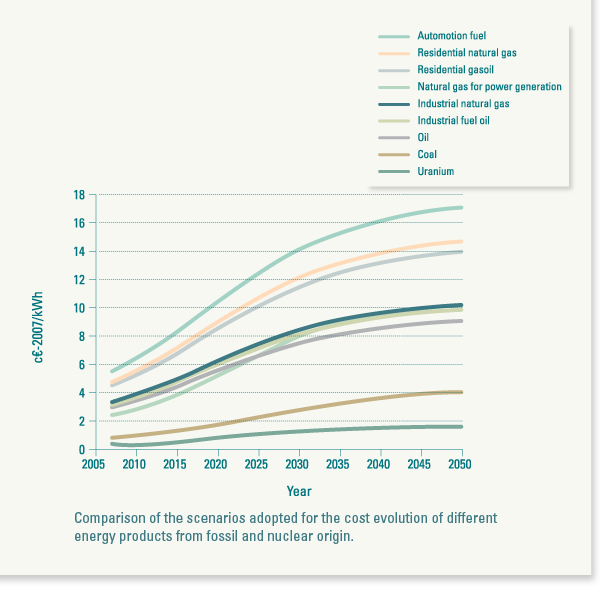You are in: Cost scenarios / Costs of fossil fuels and nuclear energy
The fossil fuel cost scenarios are based on 2007 values. If inflation values of recent decades were extrapolated into the future, final petrol cost values would collapse the world economy. This is the reason why the study adopts a scenario in which part of the world chooses to begin the transition to an Efficiency Scenario, easing the pressure on fossil resources and containing inflation.
To develop nuclear fuel cost scenarios the current value is used as the base and then an initial trend of increasing costs is established until the values necessary to make reprocessing profitable are reached.
Regarding nuclear energy, the greatest uncertainty lies in operation and maintenance costs (O&M), since they do not include externalities. The costs scenario adopted starts from some initial values with fixed O&M costs of 80 €-2007/kWe-a and variable O&M costs of 0.1 Euro cent-2007/kWhe and incorporates a gradual internalisation of externalities.


